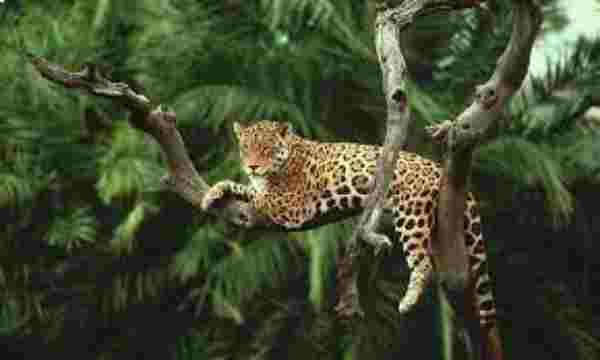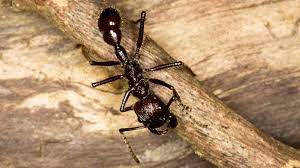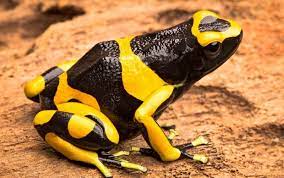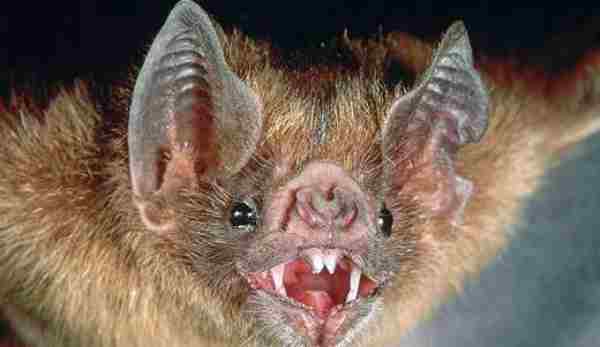Brazil is known for its breathtaking natural scenery and diverse range of living things, which is no surprise given that it is the largest country in South America. It boasts some of the world’s most breathtaking wetlands and rainforests, which are home to an array of fascinating creatures.
Table of Contents
From jaguars, anacondas, and piranhas, to the infamous man-eating black caiman and the lethal South American bushmaster snake, this country houses some of the deadliest animals in the world. With so many dangerous creatures around, it’s crucial to take precautions when exploring Brazil’s natural wonders. This article will delve into the top 10 deadliest animals in Brazil and offer some essential wildlife safety tips that you need to know before embarking on your adventure.
What are the Most Dangerous Animals in Brazil?
1. Bull Shark

Scientific name: Carcharhinus leucas
- Classification: Fish
- Habitat: Shallows, tropical waters, freshwater
- Diet: Carnivore
- Conservation status: Least concern
Brazil is known for its beautiful beaches, warm climate, and amazing waters. However, it is also known for something else – shark-infested beaches. The bull shark, notorious for head-diving and knocking out their prey like a bull, is just one of the many sharks found in Brazil’s waters. The great white shark, weighing up to 660 lbs and growing up to 13ft, tops the list as the most aggressive and ruthless killer of all the sharks in Brazil.
Reports of shark attacks reveal a shocking truth – from 1992 to 2004, about 47 shark attacks were recorded, and 16 resulted in fatalities. Survivors describe the attack as terrifying, with the shark’s vice-like grip and incredible power leaving them feeling helpless. While enjoying the waters of Brazil’s beautiful beaches, it is important to always keep your eyes peeled for shark warning portals.
2. Caiman

- Scientific name: Caimaninae
- Classification: Reptile
- Habitat: Rivers, lakes, swamplands
- Diet: Carnivore
- Conservation status: Least concern
Caimans, the feared reptiles often mistaken for alligators, are one of Brazil’s most notorious predators. With broad, muscular bodies and long, flat tails, they glide through the water with incredible speed – a fearsome sight to behold. These creatures are not picky eaters, preying on snakes, mice, big cats, and even humans. Though blessed with razor-sharp teeth, their biggest flaw is their inability to chew their food. Instead, they swallow smaller prey whole, and for bigger animals, they drag them to the depths of the water to decompose.
Their nocturnal nature makes them even more deadly, silently stalking their prey at night, and then crushing and drowning them in the water. Despite their ferocity, these beasts are still marvels of nature, with a third eyelid that helps them see clearly and shield their eyes underwater.
3. Jaguar

- Scientific name: Panthera onca
- Classification: Mammal
- Habitat: Rainforest, flood plains, savannah, swamp
- Diet: Carnivore
- Conservation status: Critically endangered
Jaguars are the ultimate definition of strength and power in the big cat world. Their well-built bodies, big wide head, and strong jaw make them the number one amongst big cats with a powerful bite that can kill their prey in one swift blow. They are also known for their unique patterns on their fur that vary with their location, allowing them to blend in with their environment. Jaguars are territorial animals that will not hesitate to fight, tear, and kill any trespassers, including other male jaguars, to defend their territory.
It is fascinating to know that these solitary creatures love spending time close to the water as they conquer their prey on land, water, and even trees thanks to their impressive climbing and swimming abilities. Jaguars might be one of the most terrifying animals in Brazil, and it’s all because of their impressive strength, impressive teeth, and of course, their mind-blowing bite to the skull.
4. Bullet Ants

- Scientific name: Paraponera clavata
- Classification: Insect
- Habitat: Tropical forest, tree roots, tree top
- Diet: Omnivore
- Conservation status: Least concern
These little creatures may not look like much, but they are some of the most feared insects in the world. The reddish-brown bullet ant is covered in tiny hairs and possesses one of the most painful bites known to man. Clocking in at around 3cm in length, their stings can last up to 24 hours and are described by victims as walking on hot coals with nails grinding under their feet.
Although their venom doesn’t stay in the human body for very long, the neurotoxins in these ants’ stings can paralyze the surrounding area and cause serious symptoms such as swelling and increased heartbeat. While they aren’t generally aggressive, they will attack when they feel threatened, and their sting is certainly not something to take lightly. In fact, these ants are even used as part of a ritual initiation process for warriors in tribes, testing their ability to endure pain.
5. Red-bellied Piranha

- Scientific name: Pygocentrus nattereri
- Classification: Fish
- Habitat: Rivers, lakes, reservoirs, floodplains
- Diet: Omnivore
- Conservation status: Least concern
Piranhas may be small fish, but don’t let their size fool you. These creatures have strong jaws and razor-sharp teeth that can tear through flesh with ease. As seen in movies like Piranha 3D, these fish are attracted to noise and blood in the water.
While most piranhas are vegetarian and only eat small fish, hungry ones can be extremely dangerous. It’s best to stay clear of them when possible. Their hunting style is similar to that of a pack of sharks, making them a formidable predator. Despite their deadly reputation, piranhas are fascinating creatures that play an important role in their ecosystems.
6. Poison Dart Frog

- Scientific name: Dendrobatidae
- Classification: Amphibian
- Habitat: Rainforest, wetlands
- Diet: Carnivore
- Conservation status: Critically endangered
The Amazon rainforest is home to many species of beautiful and fascinating animals, one of which is the poison dart frog. This enchanting creature may look harmless and gorgeous with its bright colors, but it is far from friendly. As the name suggests, its skin is smeared with lethal toxins that can kill prey and predators alike. Their beauty has also lured many unfortunate humans who couldn’t resist the temptation to touch or catch them.
It only takes a tiny amount of batrachotoxin to cause nausea, paralysis, heart failure, and in some cases, death. Among all the poison dart frogs, the golden dart frog stands out as the most poisonous, with a toxin potent enough to kill tens of people at a time. So, if you’re planning a trip to Brazil, admire these exquisite amphibians from a distance, and don’t let their beauty fool you.
7. Pit Viper

- Scientific name: Crotalus Durissus
- Classification: Reptile
- Habitat: Rainforest, swamp, floodplain
- Diet: Carnivore
- Conservation status: Least concern
The pit viper may vary its location, but one thing remains the same – it is an extremely dangerous and poisonous snake. It possesses two deadly toxins in its venom that can easily cause harm to humans. The first toxin is a neurotoxin that attacks the nervous system. It can result in paralysis which leads to blindness and organ failure. The second toxin is hemotoxin, which affects the cells that carry oxygen in the body. It causes bleeding that may be difficult to stop because it attacks the white blood cells.
Although the pit viper is not typically aggressive, it will bite if it feels threatened or stepped on by intruders. If bitten, it is best to seek medical help immediately as it can be fatal if left untreated. Understanding the danger that the pit viper presents and taking precautionary measures can help reduce any harm caused by an encounter with this venomous snake.
8. Green Anaconda

- Scientific name: Eunectes murinus
- Classification: Reptile
- Habitat: Rainforest
- Diet: Carnivore
- Conservation status: Least concern
The green anaconda is a truly fascinating creature that holds a unique place in the animal kingdom. It is the biggest and heftiest reptile in the world, with an impressive length that can reach up to 30 feet. What is even more incredible is that these snakes don’t rely on venom to catch their prey. Instead, they use their massive size and strength to wrap themselves around their prey and constrict them to death.
While they rarely pose a threat to humans, it is always important to exercise caution around them, as they can become aggressive if provoked. It is easy to see why the green anaconda has captured the imagination of people around the world with its impressive size and unique hunting abilities.
9. Vampire Bat

- Scientific name: Desmodontinae
- Classification: Mammals
- Habitat: Sub-tropic and tropical region
- Diet: Carnivore
- Conservation status: Least concern
The thought of vampire bats may conjure up images of gothic castles and mysterious figures lurking in the shadows. But the reality of these creatures is just as fascinating. With a name that suggests a certain level of menace, vampire bats do indeed drink blood to survive. However, they don’t suck it like their fictional counterparts. Instead, they make a deep cut in their prey’s skin and use their tongue to lick the blood.
Their saliva contains a protein called draculin, which prevents wounds from healing. Despite their reputation, vampire bats are actually quite impressive creatures. They have excellent eyesight and can spot their prey from over 100 meters away. However, their habit of carrying rabies means that encountering one should be avoided at all costs. All in all, vampire bats may not be the scary monsters we see in movies, but they are fascinating creatures nonetheless.
10. Brazilian Wandering Spider

- Scientific name: Phoneutria
- Classification: Arachnid
- Habitat: Rainforest, tropical wetland
- Diet: Carnivore
- Conservation status: Least concern
The Brazilian wandering spider, also known as the banana spider, is an arachnid that strikes fear into the hearts of many. These hostile and vicious creatures are notorious for their deadly bites, which can have fatal consequences for humans unlucky enough to encounter them.
Their preferred hiding spot in banana boxes has earned them their unique moniker, but make no mistake: these spiders are no joke. Even the slightest interaction with a wanderer spider can lead to serious health complications, so it’s best to avoid them at all costs. With their potent venom and aggressive nature, the Brazilian wandering spider is truly a force to be reckoned with in the insect world.
- Excessive pain,
- Swellings in the affected area,
- Fever,
- Headache and vomiting,
- Blurry vision,
- Increase in heart rate
- Organ or system failure, and
- Death.
11. Brown Recluse Spider

- Scientific name: Loxosceles reclusa
- Classification: Arachnid
- Habitat: Rock piles, rodent burrows, hollow tree stumps
- Diet: Carnivores
- Conservation status: Least Concern
The brown recluse spider, also known as the violin spider or fiddle-back spider, is undoubtedly one of the most dangerous arachnids in Brazil. Its violin-shaped markings at the top front body section give it a unique appearance, which makes it easy to spot. However, its aggressive nature and powerful venom make it a deadly predator.
These spiders hate being in the open and can attack at the slightest provocation. Its venom contains a toxin that destroys red blood cells and causes generalized tissue damage. A bite from a brown recluse requires immediate medical attention or first aid to prevent further complications. Therefore, it’s essential to keep a safe distance from these spiders and never provoke them.
- A toxin that can cause nausea
- Skin damage
- Muscle pain
- Even hemolysis (bursting of the red blood cells) in rare cases
Brazil Wildlife Safety Tips
When exploring Brazil, some boundaries are necessary to respect to ensure your safety. Ensure you follow these dos and don’ts.
Avoid swimming in Brazil without a lifeguard present. The beaches in Brazil can occasionally harbor numerous hazardous creatures that are prepared to cause harm if provoked. Be attentive to warning signs and consistently adhere to provided instructions.
Under no circumstances should you make physical contact with animals, regardless of how attractive or harmless they may appear, without receiving guidance from the relevant authorities. This caution is essential as certain creatures could carry toxic substances in their skin.
Exercise vigilance while walking to prevent unintentionally encountering reptiles like snakes or alligators. Employ your walking stick to tap the ground, producing a noise that will prompt these creatures to retreat.
Should you develop any suspicions, promptly seek medical assistance or notify the appropriate officials or park rangers, as poisoning might have occurred. Some animal bites might not cause immediate pain but could prove fatal later on. Refrain from assuming that everything is fine.
Maintain a safe and respectable distance between yourself and the wildlife. It is advisable to keep a minimum distance of 50 feet, as certain animals can react negatively when humans encroach upon their territory.
Frequently Asked Questions
What sort of animals live in Brazil?
The extensive and tropical landscape of Brazil accommodates a diverse range of animal species. Within its borders, Brazil hosts a wide array of creatures, including small insects, sizable mammals, reptiles, and various other life forms. Among these, some of the planet’s notable large animals, such as the capybara (a rodent), the rhea (a flightless bird), and the pink dolphin, find their home in Brazil.
What is the biggest animal in Brazil?
In Brazil, the spectacled bear takes the title of the largest animal. This remarkable creature can reach a weight of 355 lbs and stand at a towering height of 6 ft. Known for their solitary nature, these bears predominantly subsist on a diet of fruits, a preference that aligns with their habitat within Brazil’s mist-covered forests.
What is Brazil’s most dangerous animal?
Regarded as the most perilous creature in Brazil, the poison dart frog possesses skin laden with a potent toxin capable of fatally affecting up to ten individuals.
Are there big cats in Brazil?
Indeed, the affirmation holds true. While Brazil boasts the presence of smaller felines like the puma and ocelot, these are categorized as lesser in size. Yet, within the Brazilian fauna, only a single large feline stands as the apex predator: the jaguar.
Final Words
The Amazon rainforest is a wondrous place, full of breathtaking sights and sounds. From the lush greenery to the exotic creatures that roam free, anyone who ventures into this wild paradise is sure to be awed. However, it’s important to remember that while these creatures may be beautiful, they are not to be underestimated.
The most dangerous animals in Brazil, such as the jaguar or the Brazilian wandering spider, may seem harmless enough at first glance, but it’s imperative that you respect them and their territory. By doing so, you help to create a balance in nature that allows both humans and animals to thrive in this magnificent environment. So go ahead, and explore the wonders of the Amazon, but remember to do so with caution and respect.
Reference:
- https://www.aventuradobrasil.com/blog/dangerous-animals-in-brazil-which-ones-you-can-find-there/
- https://travelsnippet.com/south-america/brazil/most-dangerous-animals-in-brazil/

Jeevan Kodiyan
An animal enthusiast with an interest in zoology, studying the behavior and activities of animals in the wild habitat. I work on research projects related to species conservation and endangered species protection. I also leverage zoology to become an educator, educating others about the importance of protecting our natural environment and the beauty of animals in their natural habitats.









